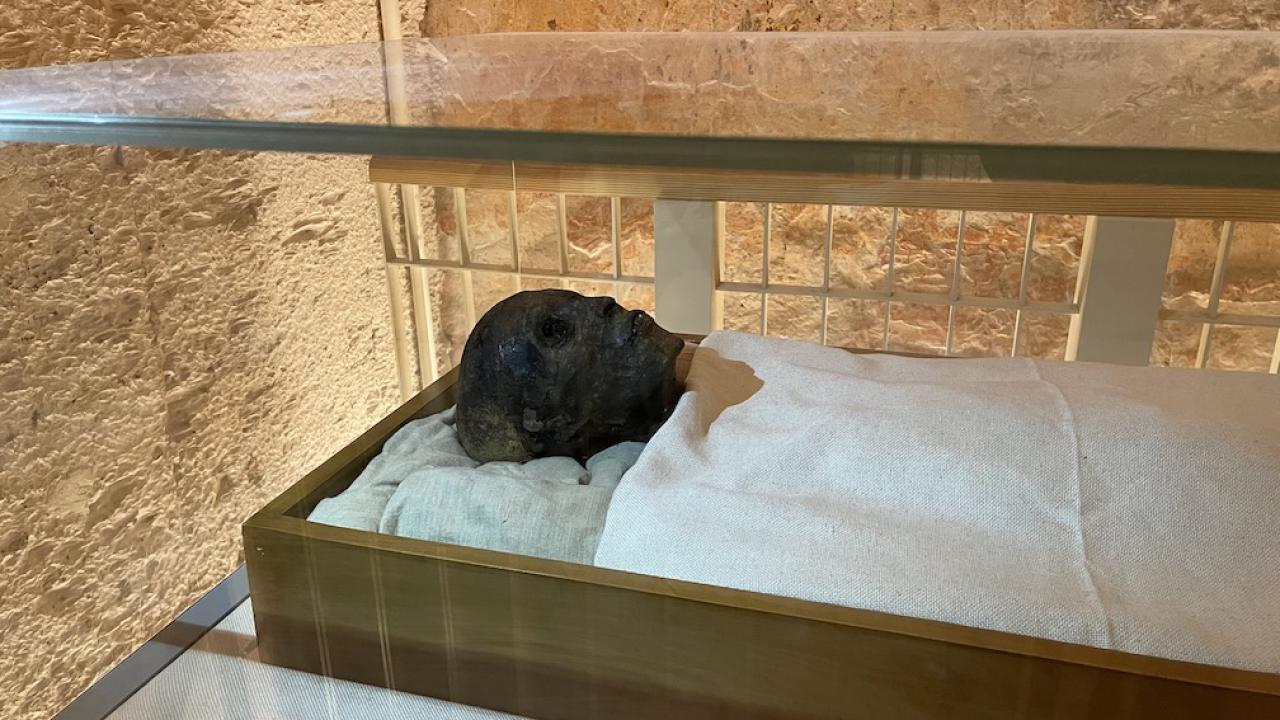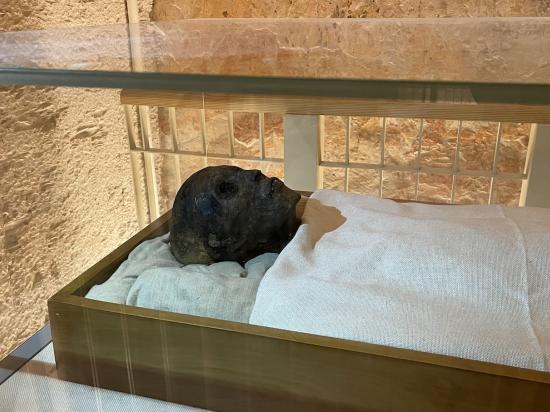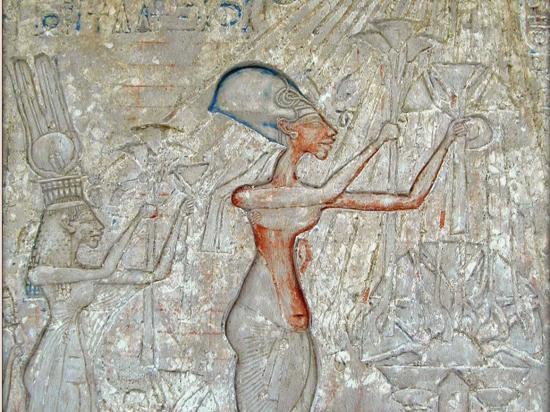Can the real King Tut please stand up?
The young Pharao was no great king that is for sure. Today he is often called the boy king, but he did not die as a child, he died aged 18 - 19, even by today's standards an adult. He married his half sister Ankhesenamun and he fathered at least 2 daughters, a truly sad story. He ruled for 9 years, more than a lot of other Kings of ancient and present times. But his life was tragic.
He ruled during the 18th dynasty of Egypt, from around 1332 BC to 1323 BC. He is one of the most famous pharaohs due to the discovery of his nearly intact tomb in the Valley of the Kings in 1922 by Howard Carter.
Tutankhamun's parentage is not uncertain anymore, as scientists found out that he is the son of Akhenaten, the "heretic pharaoh" who attempted to establish a monotheistic religion centered around the sun god Aten. Tutankhamun was born as Tutankhaten, but changed his name to Tutankhamun when he ascended the throne at the age of nine or ten.
During his reign, Tutankhamun restored the traditional Egyptian religion and abandoned the radical religious reforms of his father, Akhenaten. He also undertook a number of building projects, including the construction of several shrines and temples.
Tutankhamun's reign was relatively short, and it is believed that he died when he was just 18 or 19 years old, possibly from an infection resulting from a leg fracture. After his death, he was buried in the Valley of the Kings in a tomb that was smaller and less elaborate than those of many other pharaohs.
Tutankhamun's wife was a woman named Ankhesenamun, who was also his half-sister. Ankhesenamun was the third daughter of Akhenaten and his wife Nefertiti. She married Tutankhamun when she was around 13 years old, and he was around nine or ten.
Two little mummies of stillborn baby girls were found in his tomb in precious little coffins. His wife, Ankehsenamun is supposed to be their mother.
Ankhesenamun played an important role in Tutankhamun's reign, and several of the artifacts found in his tomb bear her name. After Tutankhamun's death, Ankhesenamun wrote to the Hittite king Suppiluliuma, asking him to send one of his sons to marry her and become the king of Egypt. This was likely an attempt to secure protection and support for herself in the chaotic aftermath of Tutankhamun's death.
The Hittite prince who was sent to marry Ankhesenamun was later killed en route to Egypt, and it is uncertain what happened to Ankhesenamun after this. Some scholars believe that she married another pharaoh, Ay, who succeeded Tutankhamun, while others believe that she may have disappeared from historical records altogether.
After his - probably unexpected - death he was sloppily mummiefied and hastily laid to rest in a quickly finalized tomb that was totally inadequate for his status. His successor Ay imposed the damnatio memoriae on him and tried to erase him and his name from history. He even added the reign of the pharao to his own reign.
Despite his short reign and relatively minor status in ancient Egyptian history, Tutankhamun has become one of the most famous pharaohs due to the discovery of his tomb and its treasures. His reign has also been the subject of much speculation and controversy, particularly due to the mysterious circumstances surrounding his death. However, modern research and analysis continue to shed new light on his life and reign.




